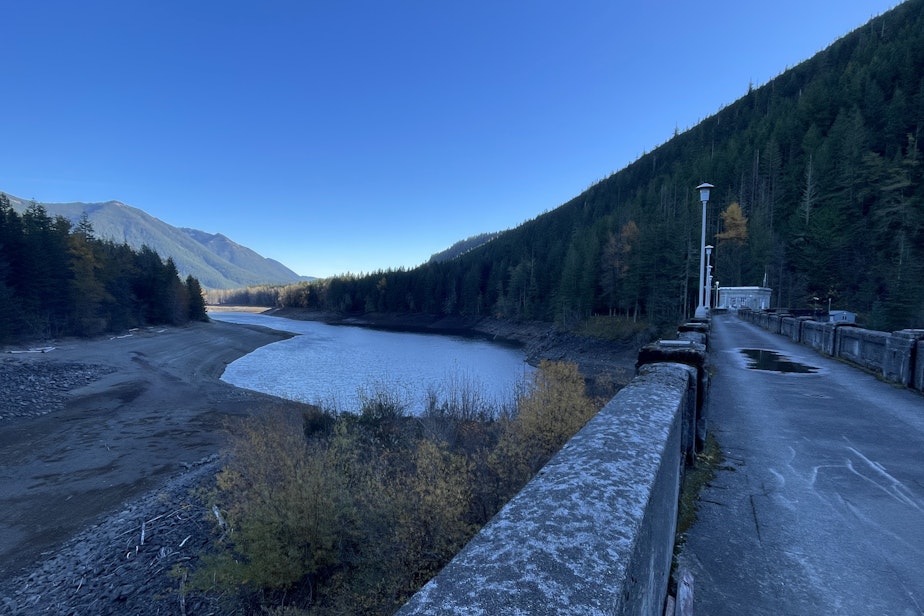Seattle got dark and rainy again. Do we still need to conserve water?
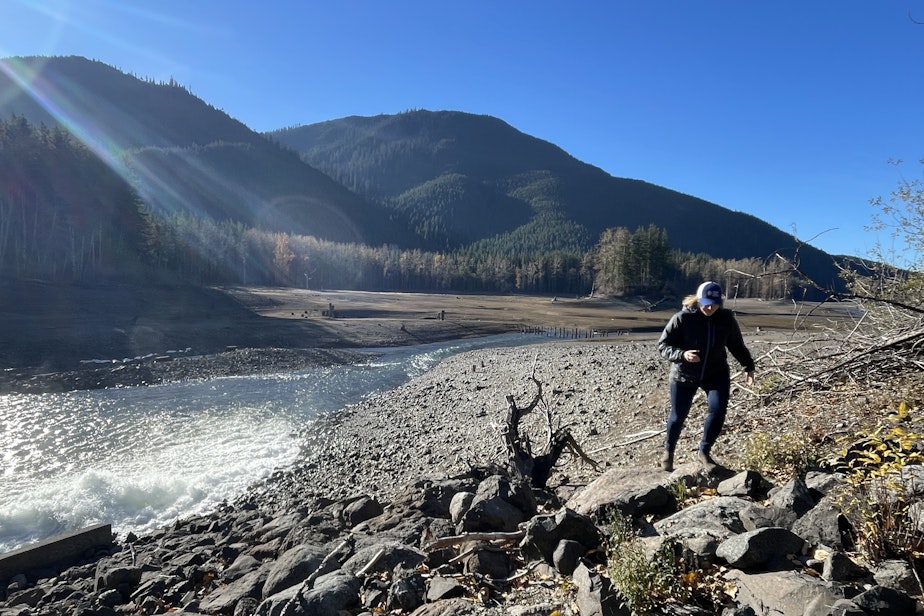
For two months, Seattle officials have been asking the public to curtail its water use, even as autumn storms have been refilling the city’s reservoirs in the Washington Cascades.
Seattle Public Utilities officials said they expect to keep asking for their customers’ help conserving water through late November, the Seattle area’s rainiest month.
Why do the calls for conservation continue despite the return of the rains?
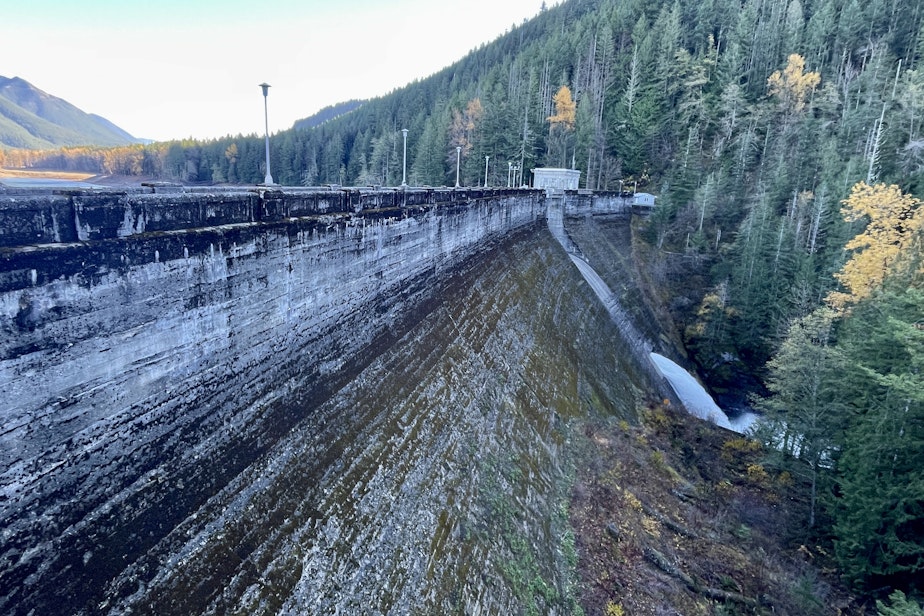
Most of the water poured, sprayed, drunk, or flushed in the Seattle area comes from a thickly forested watershed in the central Washington Cascades, closer to Snoqualmie Pass than Seattle. Behind a series of security gates sits the century-old Masonry Dam and the six-mile-long reservoir known as Chester Morse Lake.
Few people get to go beyond the gates and enter the 90,000-acre Cedar River Municipal Watershed.
Sponsored
“We really are rather aggressive about protecting water quality,” Seattle Public Utilities water planning director Julie Crittenden said. “We have this really rare designation of being an unfiltered water supply.”
To be allowed to serve the public treated but unfiltered water, the utility has to control and protect the watershed that the high-quality drinking water trickles and flows out of.
To provide drinking water without causing undue harm or breaking the law, the utility also has to leave enough water in the Cedar River below the dam for Chinook and other salmon to swim and spawn in.
On a nearly cloudless day in November, the shoreline near the dam that holds back most of the water used in Seattle, Bellevue, Renton, and nearby cities was low. A bathtub ring of bare dirt separated the water from the tall conifers surrounding it.
“Normal for us right now would be about 30 feet higher, so it would be close to that forested edge,” Crittenden said.
Sponsored
Crittenden said 2023 started out well, with lots of snow in the Cascades.
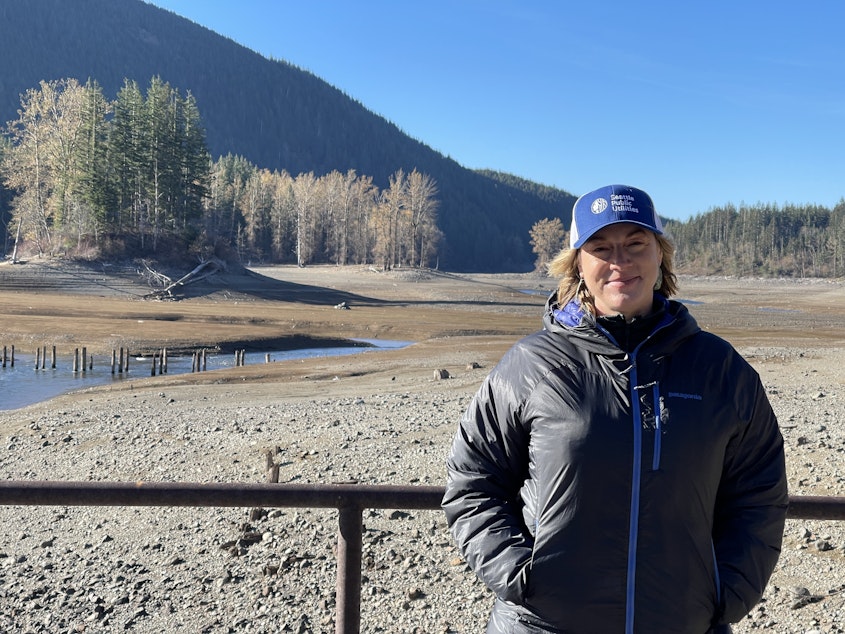
Seattle’s two mountain reservoirs, on the Cedar and Tolt rivers, were close to full this spring.
Then, an unusually warm May — which prompted Seattleites to start watering lawns earlier than usual — was followed by an exceptionally dry summer.
“This year, from May to October, we got seven inches of rain. A normal amount for us would be 26 inches,” Crittenden said. “We are thought of as this really great, green and wet place. There are years where that just isn't really the case.”
Droughts and heat waves, both of which put pressure on water supplies, will come more frequently in the Northwest and elsewhere as fossil-fuel exhaust keeps heating up the global climate, scientists warn.
READ: What the new federal climate report says about the Northwest
Sponsored
In July, Washington Gov. Jay Inslee declared a drought emergency in 12 counties, though not in King County.
Crittenden said the utility watched the water-supply situation closely as the dry summer wore on but held off on asking customers to cut back until necessary.
“We typically want to ask people to cut back before we ask the fish to cut back,” Crittenden said.
Fishes including threatened Chinook salmon spawn in the Cedar River in the fall.
On Sept. 21, the last day of summer, the utility asked its 1.5 million customers to voluntarily cut back on their water use.
Sponsored
Then it rained: six out of the following seven days, according to the National Weather Service.
“The soils were all like a dry sponge, right?” Crittenden said. “So all of that rain that we got in October really just served to kind of wet down the watersheds, and we really didn't even see inflows into the reservoir start increasing until around Halloween.”
By mid-November, the Cedar River reservoir was close to normal again, with only its western end still short on water.
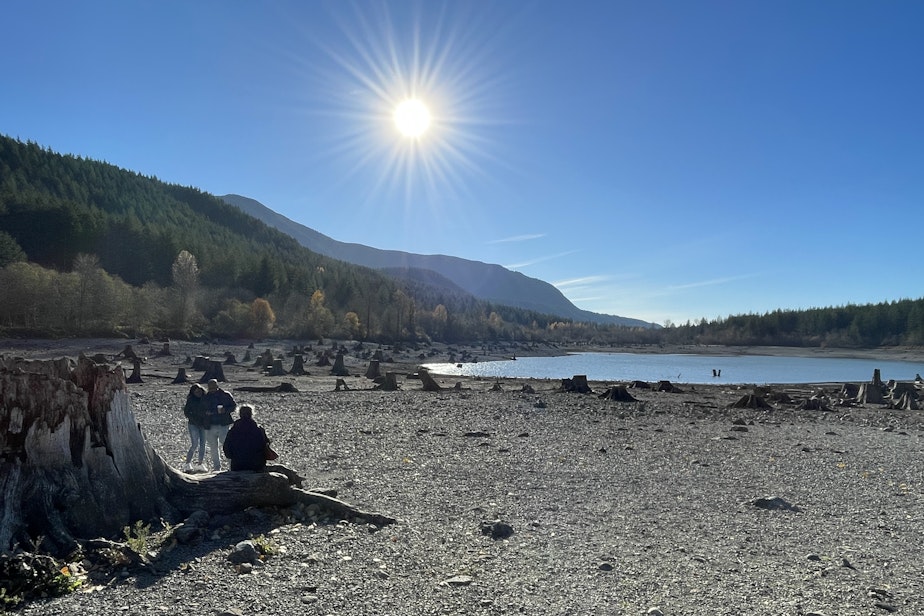
Hidden underground near the reservoir’s western end is a jumble of giant boulders shoved into place by ancient glaciers. The glacial moraine makes the ground porous enough that reservoir water leaks through it to create Rattlesnake Lake, just downhill. While most of Chester Morse Reservoir is getting close to normal levels, the utility is still keeping its western end low to avoid leaking precious water.
Sponsored
Rattlesnake Lake was looking especially stark in mid-November, with cedar stumps and even vestiges of the former town of Moncton, flooded when the reservoir was built, becoming visible.
“The reservoir in the Cedar River has come up eight feet since the beginning of November,” Crittenden said. “One good rainstorm will probably help us get over the hump there. The Tolt, on the other hand, is kind of a different story.”
The Tolt River Reservoir, which provides one-third of the water for the Seattle area, was still 20 feet below normal in mid-November.
So for now, the calls for conservation continue.
It might be counterintuitive on the wet, west side of the Evergreen State, but utility officials say conserving water is worthwhile here. In addition to saving you money, that water you don’t spray or flush might just help a salmon survive.
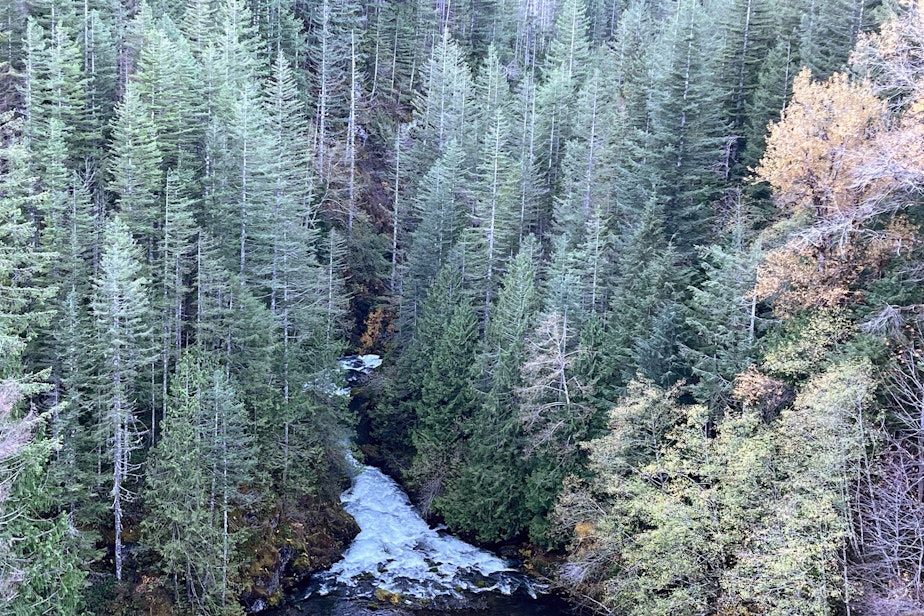
Neighboring utilities encourage saving water year-round but haven’t asked their customers for emergency conservation. To the north, Snohomish County officials say the Spada Reservoir, the county’s main water source, never got less than three-fourths full in 2023.
To the south, Tacoma Water officials say their reservoir on the Green River, just across the county line in King County, never fell more than 10% below normal.
By the end of September, they found themselves with the opposite problem: Tacoma lost its biggest water customer.
Until September, the WestRock paper mill on the Tacoma waterfront drank up 16 million gallons a day, or about one-third of Tacoma’s total water supply.
Glen George with Tacoma Water said the closure of the 90-year-old paper mill in September was a shock to the system.
“It's going to slow down the water in our entire system,” George said.
With chlorinated water sitting in its pipes longer, the Tacoma utility may need to take steps to preserve quality and taste.
It plans to charge remaining customers 9% more, starting in January, if the Tacoma City Council approves: 5% due to the mill closure on top of an already-approved 4% rate hike.
“Just because we've lost this customer doesn't mean that any of our costs have changed, right? We still have the same facilities in the ground. We still have the same personnel,” George said.
Seattle doesn’t have a single dominant customer the way Tacoma used to.
But Seattle water officials say they’ve asked all their customers to cut back on water use, from individual households to the biggest guzzlers, like the University of Washington and the Port of Seattle.
At KUOW’s request, Seattle Public Utilities identified the city’s top 10 water users, each of which used at least as much water over the past year as 1,600 Seattle households. Atop the list, the University of Washington consumed as much as 12,000 households.
KUOW asked the city’s five biggest water guzzlers what they had done to conserve water during the past two months when all users were being asked to curtail their demands.
- University of Washington: “UW takes water conversation very serious and incorporates conservation efforts into all activities while looking to improve our efforts,” spokesperson Victor Balta said in an email. New buildings have water-saving appliances and collect rainwater for toilet flushing. Balta initially told KUOW that the university had not been asked to restrict water use. After this story was published, he said the UW staffer who handles its water bills did receive a flyer urging water conservation but did not share that message with anyone else.
- Port of Seattle: “We monitor our use and investigate higher than normal consumption every month,” spokesperson Peter McGraw said in an email. “When we heard about the call for conservation from social media and the [Seattle Public Utilities] website, we immediately notified our property managers to pass it on to our tenants.” Major uses include providing water to seafood processors and Alaska-bound cruise ships.
- Seattle Parks and Recreation: The parks department turned off decorative fountains and reduced irrigation of golf courses and many lawns while continuing to power-wash public restrooms and irrigate putting greens, sports fields, food-growing gardens, and newly established plants, which can die if not watered frequently.
- Seattle Housing Authority: Seattle Public Utilities “did not specifically ask” the housing authority to conserve water this fall, spokesperson Susanna Linse said in an email. Linse said the authority informed all households of the utility’s request for residents to use less water in its tenant newsletter. The city’s largest landlord has longstanding investments in low-flow toilets and conservation measures including a leak detection program, which uses billing data to track and fix leaks in apartments and common areas.
- Equity Residential: The publicly traded, Chicago-based owner of 305 apartment buildings nationwide did not respond to KUOW’s emailed information requests.
Correction, 10:15 a.m., 11/30/2023: An earlier chart misstated which months of Seattle water consumption were tallied. The story has also been updated with details on Tacoma's rate hike and UW’s drought response.
